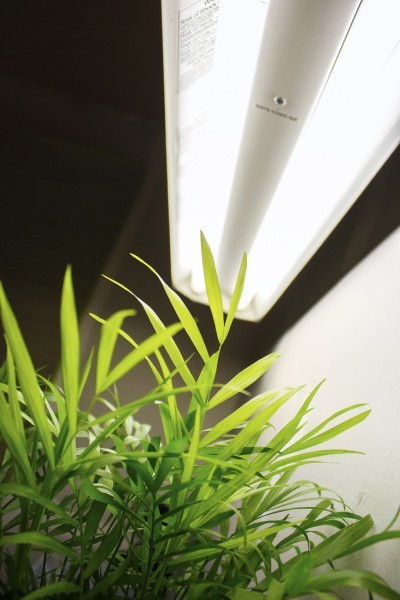






What are grow lights? The easy answer is that grow lights act as sunlight substitutes for growing plants indoors. There many types of grow lights and using grow lights on plants can be very simple or extremely complicated. Read on for basic information to get you started.
Fluorescent Tubes – Because they are inexpensive, easy to use and readily available in a variety of sizes and shapes, fluorescent grow lights are the first choice for many home gardeners. Fluorescent lights, which provide light primarily on the blue end of the spectrum, are cool to the touch, so they are safe to use above tender seedlings. Compact fluorescent lights are great for small-space gardening. You can also use newer full-spectrum fluorescent grow lights which, because they provide light on the both ends of the spectrum, are very close to natural daylight.
LED Grow Lights – This new technology offers many benefits to indoor growers and greenhouse owners because they are compact, low-heat, lightweight and easy to mount. LED lights may appear dim to human eyes because the bulbs don’t provide a lot of yellow-green light, but they offer plenty of red and blue light that maximizes plant growth.
Incandescent Lights – Old-fashioned incandescent lights are hot and can’t be placed too close to tender plants. However, some gardeners use incandescent lights, which provide light only on the red end of the spectrum, to supplement standard fluorescent tubes that provide mostly blue light. However, most indoor growers are opting for newer technology LED or fluorescent lights, which are easier to use and more energy efficient.
Other types of indoor lights include metal halide lights or high pressure sodium lights.
Selecting grow lights for plants requires careful consideration, as plants have very different lighting requirements. For example, plants such as dracaena or ferns require lower light while African violets and similar plants thrive in low to moderate light.
In general, succulents, most herbs and many types of orchids need more intense light. Seedlings require a lot of bright light to prevent them from becoming leggy.
Keep in mind that nearly all plants need at least six hours of darkness. An inexpensive timer will simplify the process.
Copyright © www.100flowers.win Botanic Garden All Rights Reserved